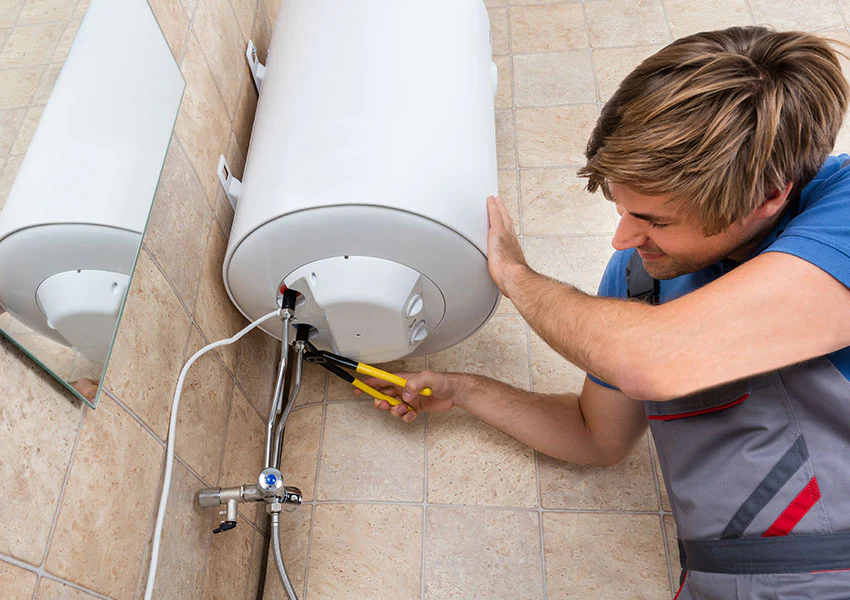We have stumbled on this post on Tips For Maintaining Your Hot Water Heater directly below on the net and decided it made perfect sense to discuss it with you on this page.

Warm water is crucial for day-to-day convenience, whether it's for a revitalizing shower or cleaning meals. To ensure your hot water system runs efficiently and lasts longer, regular upkeep is vital. This write-up gives sensible ideas and understandings on exactly how to preserve your home's hot water system to avoid disturbances and pricey repair services.
Introduction
Maintaining your home's hot water system might seem challenging, but with a few easy steps, you can ensure it operates smoothly for years to come. This overview covers every little thing from recognizing your warm water system to do it yourself upkeep ideas and understanding when to contact expert assistance.
Significance of Maintaining Your Hot Water System
Regular upkeep not just prolongs the lifespan of your warm water system however also guarantees it operates efficiently. Disregarding upkeep can lead to reduced efficiency, greater energy bills, and also premature failing of the system.
Indications Your Hot Water System Demands Maintenance
Recognizing when your warm water system needs focus can avoid significant problems. Look out for indications such as inconsistent water temperature, strange sounds from the heating unit, or rusty water.
Flushing the Hot Water Heater
Flushing your water heater gets rid of debris accumulation, improving performance and extending its life.
Checking and Changing Anode Rods
Anode rods prevent deterioration inside the storage tank. Inspecting and changing them when worn out is vital.
Complex Problems Calling For Expert Aid
Examples consist of major leaks, electric issues, or if your water heater is continually underperforming.
Routine Specialist Upkeep Benefits
Specialist maintenance can include detailed evaluations, tune-ups, and making sure conformity with safety requirements.
Inspecting and Changing Temperature Level Setups
Adjusting the temperature setups ensures ideal efficiency and safety and security.
DIY Tips for Upkeep
You can execute several maintenance jobs on your own to keep your hot water system in leading problem.
Checking for Leaks
On a regular basis examine pipelines and connections for leakages, as these can lead to water damage and greater bills.
Comprehending Your Warm Water System
Before diving into upkeep jobs, it's helpful to recognize the basic elements of your hot water system. Typically, this includes the water heater itself, pipes, anode rods, and temperature controls.
Regular Monthly Upkeep Tasks
Normal month-to-month checks can help catch minor problems before they intensify.
Examining Stress Relief Valves
Evaluating the pressure relief valve guarantees it operates correctly and stops extreme pressure accumulation.
Protecting Pipelines
Protecting warm water pipelines lowers warmth loss and can conserve power.
When to Call a Professional
While DIY maintenance is beneficial, some issues require professional knowledge.
Final thought
Routine maintenance of your home's hot water system is vital for effectiveness, durability, and cost savings. By following these pointers and recognizing when to look for specialist assistance, you can make sure a trustworthy supply of warm water without unforeseen disruptions.
How to Maintain an Instant Hot Water Heater
Before tinkering with your hot water heater, make sure that it’s not powered on. You also have to turn off the main circuit breaker and shut off the main gas line to prevent accidents. Also turn off the water valves connected to your unit to prevent water from flowing into and out of the appliance. 2. When you’re done, you have to detach the purge valves’ caps. These look like the letter “T” and are situated on either side of the water valves. Doing so will release any pressure that has accumulated inside the valves while at the same time avoid hot water from shooting out and burning your skin. 3. When the purge valves’ caps are removed, you have to connect your hosing lines to the valves. Your unit should have come with three hoses but if it didn’t, you can purchase these things from any hardware or home repair shops. You can also get them from retail stores that sell water heating systems. Read the user’s manual and follow it to complete this task properly. When the hosing lines are connected, open the purge port’s valves. 4. You should never use harsh chemical cleaners or solutions when cleaning your unit. Make use of white vinegar instead. It should be undiluted and you’ll probably use about 2 gallons. 5. Now flush your water heater. This task should probably take about 40 minutes. We can’t give you specific directions for this because the procedure is carried out depending on the type, model and brand of your heater. With that being said, refer to the user’s manual. 6. When you’re done draining the unit, you have to turn off the purge port valves again. Remove the hosing lines that you earlier installed on each of the water valves. Put the valve caps (purge port) back in their respective places and be very careful so as not to damage the rubber discs that are found inside these caps. 7. Now that everything’s back in place, check your user’s manual again to find out how to reactivate your water heating system. 8. Once it is working, turn one of your hot water faucets on just to let air pass through the heater’s water supply pipes. Leave the tap on until water flows smoothly out of it. https://www.orrplumbing.com/blog/2014/september/how-to-maintain-an-instant-hot-water-heater/

As a passionate person who reads about Water Heater Maintenance Tips You Can't Afford to Forget, I think sharing that editorial was worth the trouble. In case you appreciated our blog entry kindly remember to pass it around. Many thanks for your time. Return soon.
Click Here